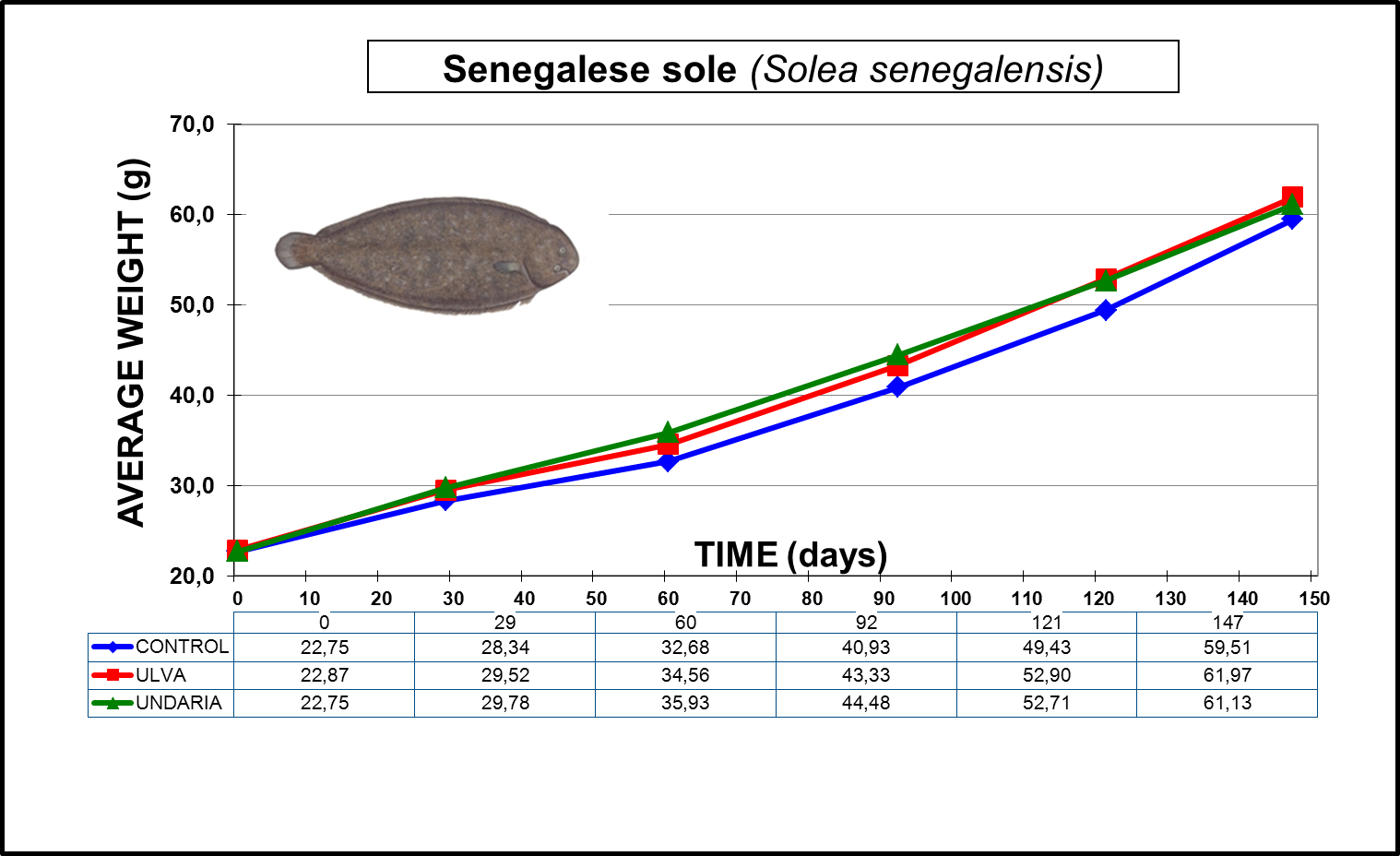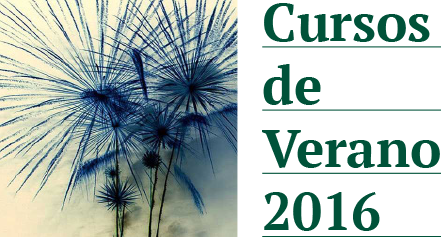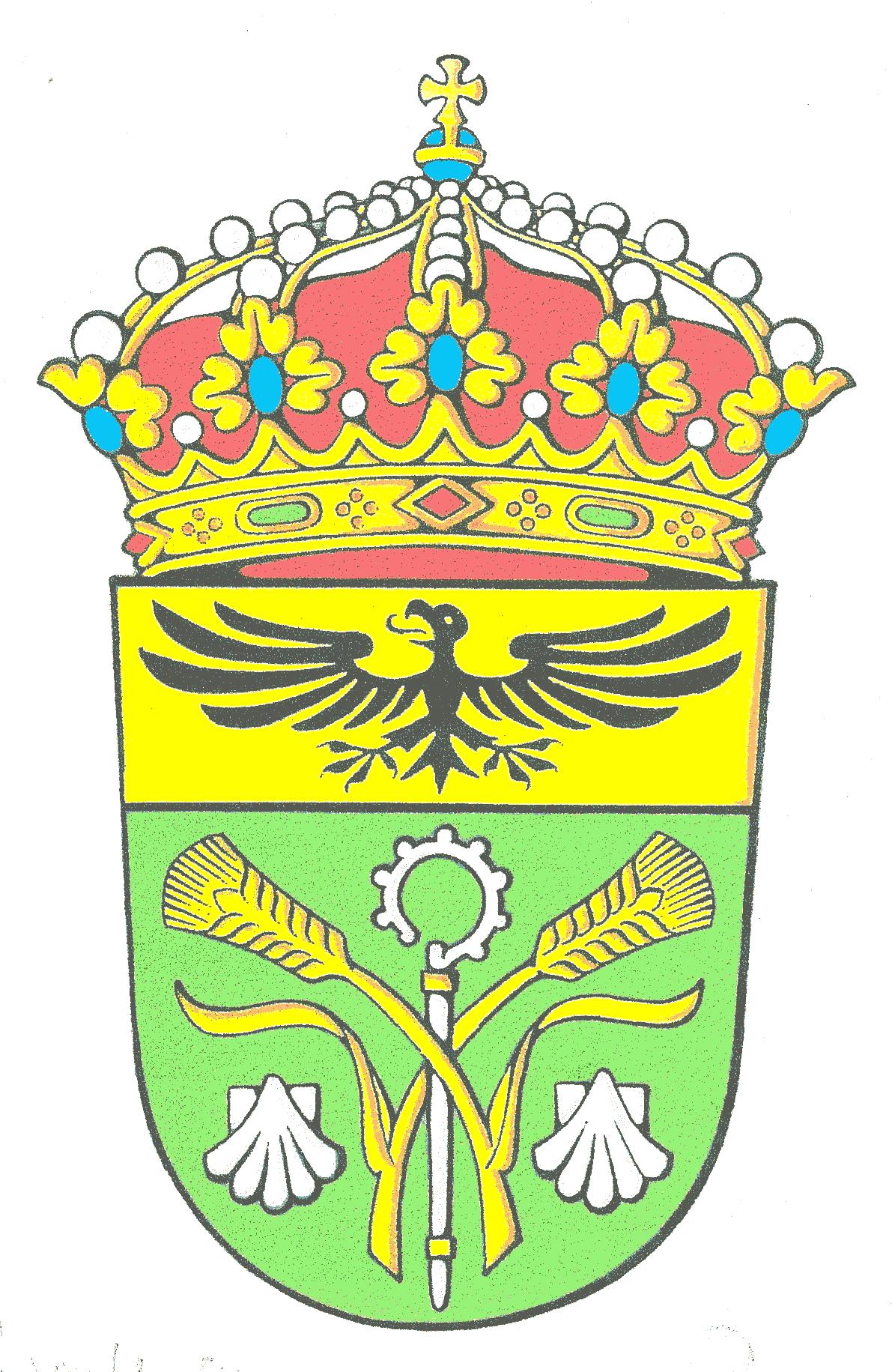DIETARY INCLUSION OF 10 SEAWEEDS IN SENEGALESE SOLE (SOLEA
19 ASSOCIATIONS AMONG PERSONALITY BMI AND DIETARY QUALITY IN3 DIETARY FATS AND PERFORMANCE DIETARY FATS
3 SUPPLEMENTAL TABLE 1 PARTIAL CORRELATIONS† BETWEEN DIETARY FACTORS‡
C HILDREN WITH DISABILITIES AND SPECIAL DIETARY RESTRICTIONS
COMMONWEALTH OF MASSACHUSETTS HUMAN RESOURCES DIVISION CLASS SPECIFICATION DIETARY
DATA EVALUATION REPORT ON THE ACUTE DIETARY TOXICITY OF
CRECIMIENTO Y COMPOSICIÓN BIOQUÍMICA DE JUVENILES DE LENGUADO ALIMENTADOS CON DIETAS FORMULADAS CON DIFERENTES FUENTES PROTEICAS Y DISTINTOS NIUELES ENERGÉTICOS
Dietary inclusion of 10% SEAWEEDS IN SENEGALESE SOLE (SOLEA SENEGALENSIS) JUVENILES
F. Linares1*, J.B. Peleteiro2, B. Álvarez–Blázquez 2, G. Pazos1, L.M.P Valente3
and J.L. Rodriguez.4
1*CIMA - Centro de Investigacións Mariñas. Pedras de Corón s/n. Apdo. 13, Vilanova de Arousa.
36620 Pontevedra, Spain. flinares @cimacoron.org
2 IEO - Instituto Español de Oceanografia, C. Oceanográfico de Vigo, Subida a Radio Faro 50, 36390 Vigo, Spain
.3. CIMAR/CIIMAR - Centro Interdisciplinar de Investigação Marinha e Ambiental and ICBAS - Instituto de Ciências Biomédicas de Abel Salazar, Universidade de Porto, Rua dos Bragas, 177, 4050-123 Porto, Portugal.
4 IGAFA - Instituto Galego de Formación en Acuicultura. Niño do Corvo s/n.36626. Illa de Arousa, Pontevedra, Spain
Introduction
Senegalese sole (Solea senegalensis, Kaup 1858) is considered
a promising flatfish species for Mediterranean aquaculture. Low energy diets seem to be suitable for Senegalese sole production (Borges et al., 2009, Valente et al., 2011) and fishmeal could be replaced up to 75% by a mixture of plant protein diets (Cabral et al., 2011, 2013). Seaweeds are regarded as important nutritional sources in aquafeeds due to its content in proteins, lipids, pigments, vitamins and minerals, but they were never tested in sole. The present work evaluated the inclusion of 10% Undaria pinnatífida and 10% Ulva rigida Senegalese sole juveniles.
Material and Methods
The experiment was conducted in a closed circuit system at the experimental facilities of IGAFA (seawater: 19±1ºC; 35 ‰). Triplicate groups of 77 fish, born in captivity, with an average weight of 22.8±0.1g were distributed by 9 tanks of 1m2 and fed three isonitrogeneous (55% of proteins) and isoenergetic (8% of lipids) diets (CTRL, Undaria and Ulva) during 5 months. By the end of the trial, growth performance and chemical composition of fish and tissues were evaluated. The results were compared by a one-way ANOVA followed by the Student´s t-test.
Results and Discussion
By the end of the feeding trial the growth performance of the fish did not differ significantly among dietary treatments (Fig.1).

Fig.1. Growth of Senegalese sole fed with different diets
The final body weight of fish fed with Ulva and Undaria (61-62g) was similar to that obtained in fish fed the control diet (60g) (Fig.1). Feed conversion ratios were also similar among the three tested diets varying between 1.4 and 1.6.
Whole body composition of Senegalese sole fed the different seaweeds did not differ significantly from those fed the control diet. Similarly, muscle protein (18-20%) and lipid (2%) content did not differ among the three diets (Table I). However, in the liver the inclusion of 10% seaweeds led to a significant reduction of both protein (9-10% vs 13%) and lipid content (6-7% vs 8%).
Table I.
Whole body and tissue composition (% wet weight) of Senegalese sole (mean±sd).
|
|
Dietary treatments |
||||
|
|
CTRL |
|
Ulva |
|
Undaria |
|
Whole Body Composition (% WW) |
|
|
|
|
|
|
Dry matter |
27.0±0.1 |
|
27.1±0.6 |
|
26.6±0.6 |
|
Protein |
19.2±0.2 |
|
19.3±0.2 |
|
18.8±0.2 |
|
Lipids |
6.6±0.2 |
|
6.9±0.4 |
|
6.7±0.3 |
|
Energy (KJ g-1) |
6.8±0.02 |
|
6.9±0.2 |
|
6.7±0.2 |
|
|
|
|
|
|
|
|
Muscle Composition (% WW) |
|
|
|
|
|
|
Protein |
18.7±0.3 |
|
20±1.6 |
|
17.9±1.4 |
|
Lipids |
2.1±0.6 |
|
2.1±0.8 |
|
2.2±0.3 |
|
|
|
|
|
|
|
|
Liver Composition (% WW) |
|
|
|
|
|
|
Protein |
13.3±0.3a |
|
10±0.8b |
|
8.6±1.6b |
|
Lipids |
8.4±0.6a |
|
6.7±0.0b |
|
6.4±0.2b |
|
|
|
|
|
|
|
This study demonstrate for the first time that Senegalese sole can be fed with diets containing 10% seaweeds (Ulva and Undaria) without affecting the growth performance or the flesh quality. Further studies should be carried out to evaluate the long term effects of these seaweeds on fish well being.
References
Borges, P., Oliveira, B., Casal, S., Dias, J., Conceição, L., Valente, L.M.P., 2009. Dietary lipid level affects growth performance and nutrient utilisation of Senegalese sole (Solea senegalensis) juveniles. Br. J. Nutr. 102, 1007–1014.
Cabral, E.M.; Bacelar, M. ; Batista, S., Castro-Cunha, M. ; Ozório, R.O.A.; Valente. L.M.P.2011. Replacement of fishmeal by increasing levels of plant protein blends in diets for Senegalese sole (Solea senegalensis) juveniles. Aquaculture 322, 74-81
Cabral, E.M; Fernandes, TJR ] ; Campos, SD ; Castro-Cunha, M ; Oliveira, MBPP; Cunha, LM ; Valente, LMP. 2013. Replacement of fish meal by plant protein sources up to 75% induces good growth performance without affecting flesh quality in ongrowing Senegalese sole. Aquaculture 380, 130-138
Valente, L.M.P., Linares, F., Villanueva, J.L.R., Silva, J.M.G., Espe, M., Escórcio, C., Pires,M.A., Saavedra, M.J., Borges, P., Medale, F., Alvárez-Blázquez, B., Peleteiro, J.B.2011. Dietary protein source or energy levels have no major impact on growth performance, nutrient utilisation or flesh fatty acids composition of market-sized Senegalese sole. Aquaculture 318, 128–137.
DETERMINANTS OF DIETARY COMPLIANCE AMONG ITALIAN CHILDREN DISENTANGLING THE
DIETARY INCLUSION OF 10 SEAWEEDS IN SENEGALESE SOLE (SOLEA
DIETARY REFERENCE INTAKE NUTRIENT STANDARDS TO MAINTAIN HEALTHY POPULATIONS
Tags: (solea senegalensis), sole (solea, senegalese, seaweeds, dietary, inclusion, (solea
- 231 SSI MODELLERINGSKOMPETENCE OPGAVEEKSEMPEL UDARBEJDET PÅ TEC –
- HOLGERS A2 POCKET (I CALLERLABS INLÄRNINGSFÖLJD VID DENNA
- BIDASOA ZONALDEKO ESKOLARTEKO XAKE TXAPELKETA ALEBIN ETA INFANTIL MAILA
- REPUBLIKA HRVATSKA PRIJEDLOG KARLOVAČKA ŽUPANIJA GRAD KARLOVAC GRADSKO VIJEĆE
- CLASIFICACIÓN 79 CAMPIONAT DE SABADELL FECHA 050409
- ZAŁĄCZNIK NR 4 DO SIWZ ZPPN112019 ZAMAWIAJĄCY OPERA WROCŁAWSKA
- ACTION PLAN FOR IMPLEMENTATION OF PATIENT AND CARER INVOLVEMENT
- JOSEP SANTESMASES I OLLÉ VILARODONA 1951 DE FORMACIÓ
- 8TH INTERNATIONAL CONGRESS AND 13TH NATIONAL OF CLINICAL PSYCHOLOGY
- APPLYING FOR A DETERMINATION FROM EALING SACRE MAINTAINED SCHOOLS
- 6005 WIS JI‑CRIMINAL 6005 6005 CONTROLLED SUBSTANCE ANALOG —
- NAME PERIOD VIRGINA PROVINCE WORKSHEET 1 THE
- ÀREA D’ECONOMIA INNOVACIÓ I SERVEIS CENTRALS AGÈNCIA TRIBUTÀRIA DE
- IKATES SRO AUTORIZOVANÁ OSOBA Č 225 NOTIFIKOVANÁ OSOBA Č
- NA TEMELJU ČLANKA 26 ZAKONA O PREDŠKOLSKOM ODGOJU I
- KLASA0230115016 URBROJ21380602151 LUMBARDA2 TRAVNJA 2015 NA TEMELJU ČLANKA 20
- SUBSECRETARÍA REGIONAL DEMARCACIÓN HIDROGRÁFICA DE PASTAZA INFORME PRELIMINAR DE
- 120 DIREKTORAT PEMBINAAN PENDIDIKAN KHUSUS DAN LAYANAN KHUSUS PENDIDIKAN
- PUBLIC QUESTION TIME PLEASE SEE ATTACHED GUIDELINES FOR PARTICIPATION
- PASIENTINFORMASJON OM VAGIFEM® VI HAR MOTTATT HENVISNING FRA DIN
- MATERIAS PROPIAS DE LA MODALIDAD DE CIENCIAS Y TECNOLOGÍA
- THERMOMETER READOUTS FOR RTD PRT AND THERMISTOR SENSORS 1502A
- PAUTA MULTIPLICAR DECIMALES POR DECIMALES YA SABES QUE MULTIPLICAR
- THE SOCIAL MODEL OF DISABILITY 19 RECTANGLE 2 FACTSHEET
- VERSIÓN FINAL XV REUNIÓN DE LA CONFERENCIA REGIONAL SOBRE
- EXPOSITORES PARTICIPANTES EN INTERCAZA 2008 SIERRA MORENA CORDOBESA STAND
- 127 DOK 2 HAVA NAKLİYATINI KOLAYLAŞTIRMA KOMİTESİ (HANKOK)
- AGUA POTABLE PARA COMUNIDADES INDÍGENAS INFORMACIÓN ONG FUNDACIÓN DESARROLLO
- POLICIES & PROCEDURES RESPONSIBILITY IN COMMON AREAS DISMISSAL
- WORK ENERGY AND POWER NAME WORKENERGY CALCULATIONS STUDY LESSON
 BOLETÍN DE MATRÍCULA TRADICIONAL (CUMPLIMENTE ESTE BOLETÍN SOLO SI
BOLETÍN DE MATRÍCULA TRADICIONAL (CUMPLIMENTE ESTE BOLETÍN SOLO SI TC ETİMESGUT BELEDİYE BAŞKANLIĞI MECLİS KARARI KARAR NO
TC ETİMESGUT BELEDİYE BAŞKANLIĞI MECLİS KARARI KARAR NO  DOCUMENT INFORMATION AND INSTRUCTIONS FORM TRAINING CONTRACT LOW RISK
DOCUMENT INFORMATION AND INSTRUCTIONS FORM TRAINING CONTRACT LOW RISKIKSO05 ZGŁOSZENIE WNIOSKU O WYDANIE DOWODU OSOBISTEGO HASŁO
19 WHICH SPM METHOD SHOULD BE USED TO EXTRACT
 DHHS NONDISCRIMINATION NOTICE THE DEPARTMENT OF HEALTH AND HUMAN
DHHS NONDISCRIMINATION NOTICE THE DEPARTMENT OF HEALTH AND HUMANSTATUT STOWARZYSZENIA PRZYJACIÓŁ INTEGRACJI – TEKST JEDNOLITY Z DNIA
!doctype Html html +zzokrkuakpazrgq Langfr head meta
 LITALIANO PER STUDIARE TESTI SEMPLIFICATI PER LINSEGNAMENTO DELLA
LITALIANO PER STUDIARE TESTI SEMPLIFICATI PER LINSEGNAMENTO DELLA S OP 28 POWERED INDUSTRIAL TRUCKS (FORKLIFTS) CONTENTS 1
S OP 28 POWERED INDUSTRIAL TRUCKS (FORKLIFTS) CONTENTS 1 EL CUESTIONARIO ETAPAS DEL PROCESO INVESTIGADOR INSTRUMENTACIÓN EL CUESTIONARIO
EL CUESTIONARIO ETAPAS DEL PROCESO INVESTIGADOR INSTRUMENTACIÓN EL CUESTIONARIO PHARMACY NAME ADDRESS 1 ADDRESS 2 ADDRESS 3 POSTCODE
PHARMACY NAME ADDRESS 1 ADDRESS 2 ADDRESS 3 POSTCODEWSZECHNICA POLSKA SZKOŁA WYŻSZA W WARSZAWIE F I N
 C ONCELLO DE SOBRADO PRAZA DO PORTAL 1 15813
C ONCELLO DE SOBRADO PRAZA DO PORTAL 1 15813 V ER 20171 MATERIAL TRANSFER AGREEMENT (MTA) BETWEEN THE
V ER 20171 MATERIAL TRANSFER AGREEMENT (MTA) BETWEEN THESAYREVILLE DEPARTMENTS OF CONSTRUCTION FIRE ZONING AND CODE ENFORCEMENT
UCHWAŁA NR LXI642IV2005 RADY MIASTA POZNANIA Z DNIA
 COMUNICADO DE PRENSA FEBRERO DE 2021 RENAULT CELEBRA LOS
COMUNICADO DE PRENSA FEBRERO DE 2021 RENAULT CELEBRA LOSA MODEL CODE OF CONDUCT FOR GOVERNING BODIES THE
CHILDREN’SAISD STUDENT HEALTH SERVICES VARICELLA VERIFICATION FORM DATE